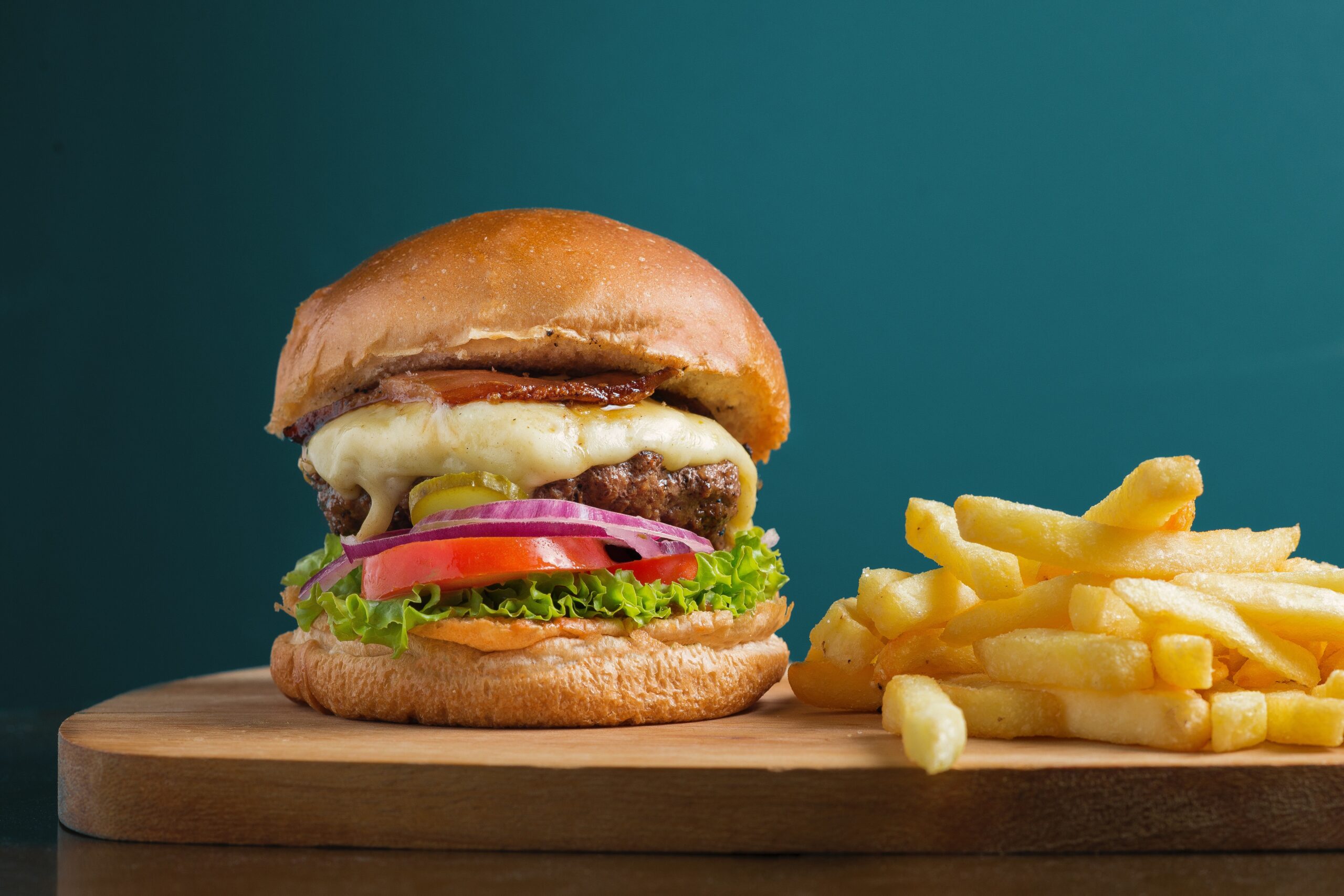Article

Nothing evokes the quintessential American backyard BBQ like the cheeseburger. It’s a seemingly simple dinner – you run to the store and grab meat, cheese, lettuce, tomatoes, condiments, and buns – cook, assemble, and enjoy. Yet the journey these ingredients take to get to your plate perfectly illustrate the complexities of a global food and agricultural system at work.
Take for example the ground beef. To deliver 1,000 calories worth of ground beef to your plate requires:
- 1,557 square feet of pasture
- 36,000 calories worth of feed (grass, corn, soybeans, etc.)
- 434 gallons of water
And things just get more complex from here. The feed that’s grown for the cattle requires land, equipment, chemicals, fertilizer, and water. Getting the feed to the cattle and the cattle to the grocery store? Add transportation, processing, and packaging. Keeping the beef cold? Add energy. Making sure these processes keep running day after day? Add people. All of a sudden, that one package of ground beef you bought is representative of an interconnected web of industries, countries, resources, ecosystems, humans, and animals.
Now, multiply this across all the food you eat in a day, and you can see that our current food and agricultural system has a significant impact on people, animals, and the planet. 10% of the American workforce and hundreds of millions of people in other countries rely on our food and agricultural system for work. Cheap, low-quality feed can harm animal health and magnify the well-documented problem of methane emissions from livestock, already the second largest source of emissions in the food and agriculture industries. And global disruptions like Covid-19 the war in Eastern Europe, and climate change have all laid bare how vulnerable we are to supply chain disruptions and severe weather events.
For families interested in food and agriculture, there are myriad opportunities to invest impact capital at any stage of the food and agricultural system to benefit people, animals, and the planet. Let’s look at just one input in the journey from cow to cheeseburger – animal feed. Investing in higher quality animal feed enhances livestock health, reduces livestock emissions, and promises to raise farmers’ productivity, boosting their income. Likewise, improving soil health through regenerative farming can reduce dependence on fertilizers which can lower emissions from the production and transit of these materials, and even help curb water pollution. Finally, recent strides in plant-based and cultivated protein promise a revolution in the way we raise animals and consume meat if the technology can be scaled effectively.
Investment in any one of the systems or processes that make up our food and agricultural systems can have ripple effects across numerous industries, geographies, and ecosystems. It’s an extraordinary way for families to use well-placed impact capital to create positive, sustainable, and long-lasting transformative effects for people, animals, and the planet.

